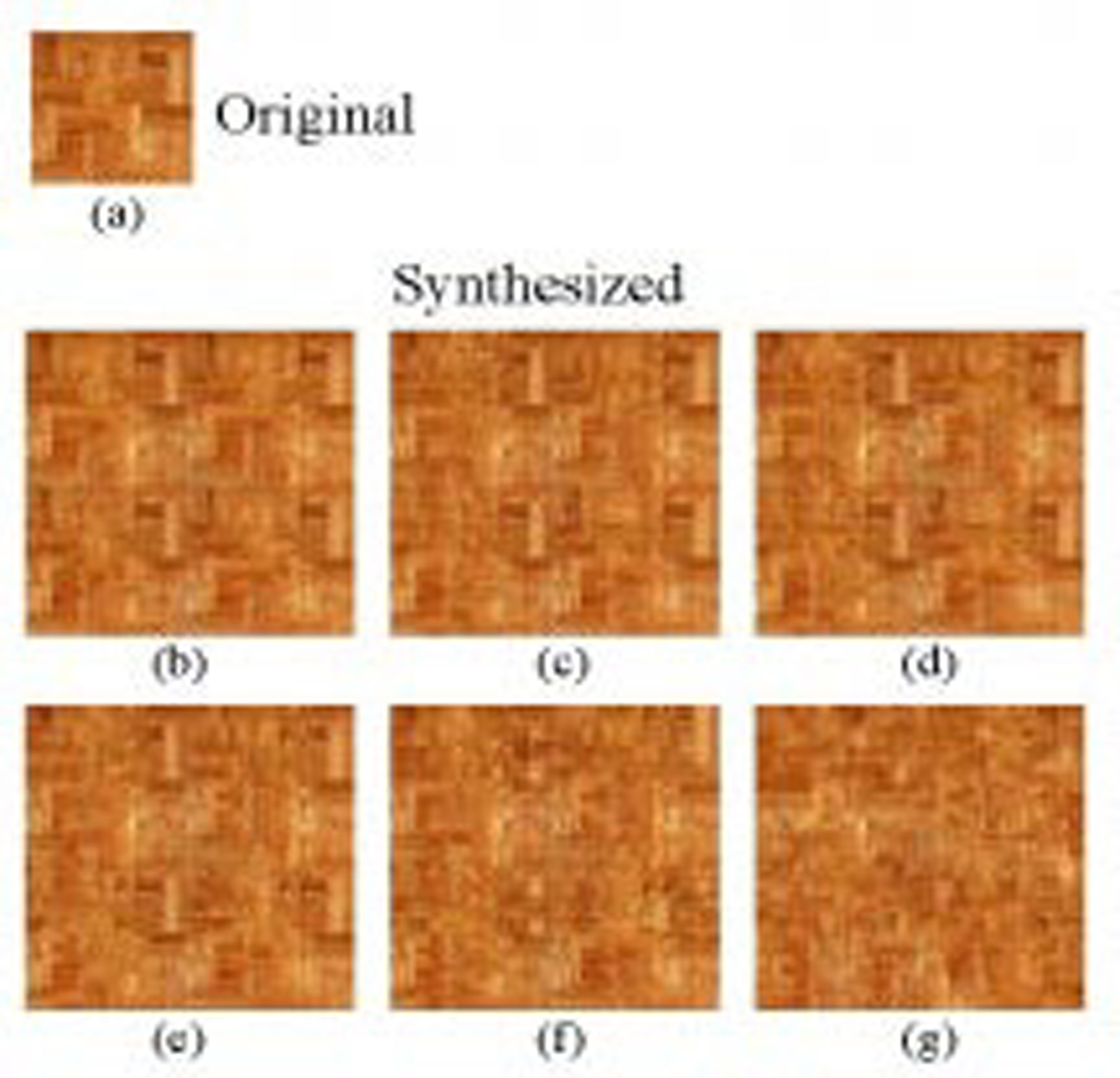“Multiresolution sampling procedure for analysis and synthesis of texture images” by De Bonet
Conference:
Type(s):
Title:
- Multiresolution sampling procedure for analysis and synthesis of texture images
Presenter(s)/Author(s):
Abstract:
This paper outlines a technique for treating input texture images as probability density estimators from which new textures, with similar appearance and structural properties, can be sampled. In a two-phase process, the input texture is first analyzed by measuring the joint occurrence of texture discrimination features at multiple resolutions. In the second phase, a new texture is synthesized by sampling successive spatial frequency bands from the input texture, conditioned on the similar joint occurrence of features at lower spatial frequencies. Textures synthesized with this method more successfully capture the characteristics of input textures than do previous techniques.
References:
1. J.R. Bergen. Theories of visual texture perception. In D. Regan, editor, Vision and Visual Dysfunction, volume 10B, pages 114-134. Macmillian, New York, 1991.
2. J.R. Bergen and E. H. Adelson. Early vision and texture perception. Nature, 333(6171):363-364, 1988.
3. J.R. Bergen and B. Julesz. Rapid discrimination of visual patterns. IEEE Transactions on Systems Man and Cybernetics, 13:857-863, 1993.
4. J.R. Bergen and M. S. Landy. Computational modeling of visual texture segregation. In M. S. Landy and J. A. Movshon, editors, Computational Models of Visual Perception, pages 253-271. MIT Press, Cambridge MA, 1991.
5. R J. Burt and E. H. Adelson. The laplacian pyramid as a compact image code. IEEE Transactions on Communications, 31:532-540, 1983.
6. C. Chubb and M. S. Landy. Orthogonal distribution analysis: A new approach to the study of texture perception. In M. S. Landy and J. A. Movshon, editors, Computational Models of Visual Perception, pages 291-301. MIT Press, Cambridge MA, 1991.
7. A. Gagalowicz. Texture modelling applications. The Visual Computer, 3:186-200, 1987.
8. A. Gagalowicz and S. D. Ma. Model driven synthesis of natural textures for 3-D scenes. Computers and Graphics, 10:161-170, 1986.
9. N. Graham, A. Sutter, and C. Venkatesan. Spatial-frequency and orientation-selectivity of simple and complex channels in region segregation. Vision Research, 33:1893-1911, 1993.
10. D. J. Heeger and J. R. Bergen. Pyramid based texture analysis/synthesis. In Computer Graphics, pages 229-238. ACM SIGGRAPH, 1995.
11. B. Julesz. Visual pattern discrimination. IRE Transactions on Information Theory, IT-8:84-92, 1962.
12. M. R. Luettgen, W. C. Karl, A. S. Willsky, and R. R. Tenney. Multiscale representations of markov random fields. IEEE Trans. on Signal Processing, 41 (12):3377-3396, 1995.
13. S.D. Ma and A. Gagalowicz. Determination of local coordinate systems for texture synthesis on 3-D surfaces. Computers and Graphics, 10:171-176, 1986.
14. G. Turk. Genereating textures on arbitrary surfaces using reaction-diffusion. In Computer Graphics, volume 25, pages 289-298. ACM SIGGRAPH, 1991.
15. A. Witkin and M. Kass. Reaction-diffusion textures. In Computer Graphics, volume 25, pages 299-308. ACM SIG- GRAPH, 1991.
16. S. C. Zhu, Y. Wu, and D. Mumford. Filters random fields and maximum entropy(frame): To a unified theory for texture modeling. To appear in Int’l Journal of Computer Vision, 1996.




